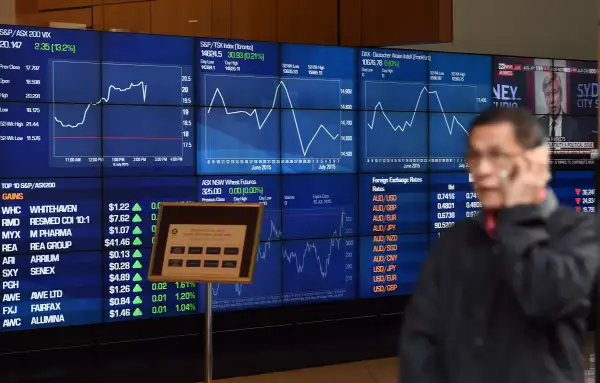Junk Bonds Are Back. Are They Any Less Risky?
Money is not a client of any investment adviser featured on this page. The information provided on this page is for educational purposes only and is not intended as investment advice. Money does not offer advisory services.

Junk bonds are back, and packaged in a format designed to appeal to today's investors and get away from their seamy 1980s-era reputation.
While bond funds are nothing new, junk bond exchange-traded funds, which aim to mirror the makeup and performance of a particular index, are having a moment. Low interest rates driven by Federal Reserve policy has encouraged companies to borrow — leading to a record $51.5 billion of junk bonds issued in June.
Investors, hungry for decent yields, seem unable to get enough. On average, junk bonds yield 4.77%, compared to less than 1.1% for bonds overall. The four largest high-yield ETFs, which collectively total $51.6 billion, saw net inflows of a combined $13.9 billion year to date through July 21. The Morningstar US High-Yield Bond Index rose 10.3% in the second quarter.
What are junk bonds?
Some quick background: Companies can raise money by issuing equity (stocks) or debt (bonds). Corporate bonds are rated for creditworthiness by the big ratings agencies. The ones that fall below BB+ as ranked by S&P (or Baa using Moody’s ranking system) are termed “high-yield,” a.k.a. junk bonds, in contrast to lower-risk “investment grade” issuances. Bonds that fall into junk territory are deemed to pose at least some risk of being unable to meet their financial obligations in the long or short term, with lower-rated bonds at a greater risk of near-term default.
As tempting as high-yield debt might seem, especially given the paltry returns on safer investment vehicles like Treasuries, advisors say this isn’t an asset class for the inexperienced. "When you move to the credit markets — and the high-yield portion of the market — you really have to balance the yield opportunity with the risk of principal loss," says Bob Boyd, managing director at Pacific Asset Management.
Junk Bond ETFs
The bar to entry for junk bond ETFs is lower than typical bond-buying because investors don’t have to buy individual bonds, and investments that comprise multiple underlying assets are, broadly speaking, more stable and require less research time than individual stocks or bonds. "High-yield ETFs are basically index products, so they’re looking to capture the entire return of the entire high-yield market," Boyd says.
“You get issuer diversification, creditworthiness diversification. You also get the benefits of sector diversification,” says Todd Rosenbluth, head of ETF and mutual-fund research at research firm CFRA. "There are hundreds upon hundreds of issuers. You spread that risk around, because defaults do happen."
But the experts are quick to point out that this benefit is only in comparison to holding individual junk bonds. Don’t lose sight of the fact that these assets offer higher yields because they are riskier, even though ETFs supposedly spread that risk out more broadly, says David Trainer, chief executive of investment research firm New Constructs. "Don’t assume that just because it’s an ETF, it’s safe."
“People thought diversification would protect them in mortgage-backed securities,” Trainer says. That didn’t turn out well for investors in 2008, he points out, and in a recessionary environment awash in cheap money, troubled companies can collapse under the weight of their debts.
And using diversification as a hedge against default is limited by the way these funds are composed, says Peter Essele, head of portfolio management for Commonwealth Financial Network. Like stock ETFs, these funds are market-weighted, which means investors have the greatest exposure to the companies that are borrowing the most.
“That's not generally a good thing, if you’re more and more exposed to a company that’s issuing more and more debt," he says. If a company has to keep issuing debt just to meet ordinary financial obligations, that's a red flag.
Trading Junk Bond ETFs
Like stock funds, bond ETFs also are comprised of a basket of securities representative of a market index, but bonds don't trade as frequently as stocks do, which means the value of bond ETF shares and the quoted value of the bond ETF's underlying assets can sometimes diverge.
"It’s a mismatch in liquidity. You have ETFs that are generally high frequency that are traded constantly, and high-yield bonds by nature are somewhat illiquid investments and shouldn’t be traded that often," Essele says, who calls this disconnect "the main structural pitfall" of junk bond ETFs. Worry about a lack of liquidity is the primary reason the Federal Reserve has poured money into bond markets over the past few months.
What's more, fees on junk bond ETFs range from roughly 0.15% to 1% of assets invested per year, with some creeping even higher. "There are high transaction costs to trading high-yield bonds," Essele says, and those get passed along to investors. "In the range of 30 to 60 basis points is fair, I would say, for a high-yield ETF. Above that, you’re starting to get into expensive territory." (One 1% is equal to 100 basis points.)
If you want to include junk bond ETFs in your portfolio, experts say it's wise to keep only a small fraction of your money in this asset class. Rosenbluth says it should comprise no more than 10% of total assets in a portfolio with a 60/40 stock/bond split.
Boyd says it might benefit you to think of junk bonds as an add-on to your equities holdings. The stock and bond markets tend to move inversely to one another, in general, but junk bonds track stocks more closely than they do their "safer" brethren.
"When you think about high-yield bonds, they’re in a different risk category than most other bonds out there. It really should be closer to your equity allocation," Boyd says, adding that it should make up no more than 20% of your equity allocation.
More from Money:
Private Equity May Be Coming to Your 401(k). Investor Advocates Are Crying Foul
